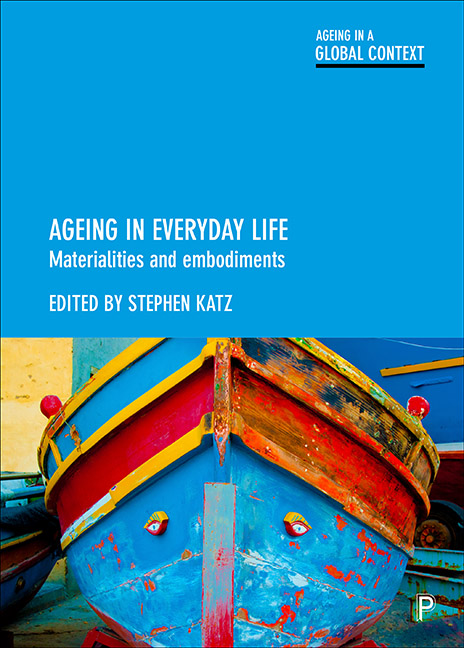Ten - Why clothes matter: the role of dress in the everyday lives of older people
Published online by Cambridge University Press: 22 April 2022
Summary
In academic circles, clothing and dress are often regarded as somewhat frivolous topics. Although scholars (Entwistle, 2000; Carter, 2003; Crane and Bovone, 2006) have argued that interest in them within sociology and social anthropology goes back to the founding theorists of the disciplines, they remain marginal to the mainstream, associated negatively with the domestic world of women (unless analysed in terms of economic production), regarded as lightweight and superficial. In this they share something of the treatment of everyday life. Although work addressing everyday life (Adler et al, 1987) similarly goes back to the late 19th century and the founding decades of the social sciences – Georg Simmel is a theorist who is common to both areas – it has been as part of the unmarked, shadow tradition of analysis that has persisted in parallel to the dominant mainstream sociology, with its focus on socioeconomic structures, organisms and systems. However, with the complex of cultural, intellectual and social shifts that occurred in the late 20th century, broadly associated with postmodernism, this unmarked tradition has grown in scope and influence. Particularly under the impact of analytic categories such as gender, emotion and embodiment, and with the growing interest in methodological approaches that focus on the experiential, the embodied and the visual, new subjects have come into view. These developments have created what Sztompka (2008) terms the new ‘third sociology’– that of social existence – to be added to the earlier ones of social structures and social atoms. As a result, topics previously regarded as trivial and beneath scientific note, such as love, intimacy, eating out, shopping, fashion, anxiety, fitness, taxi riding, now feature in the catalogues of the most prestigious publishers in the social sciences (Sztompka, 2008, p 1).
These developments have also begun – somewhat belatedly – to have an impact on age studies. Until the 21st century, age studies, in the form of social gerontology, remained relatively isolated intellectually. The field was structured around the discourses of public policy and social welfare, and these largely framed the problematic within which age was analysed. More recently, however, that dominance has been challenged, with the rise of analytic approaches broadly termed cultural gerontology (Twigg and Martin, 2015).
- Type
- Chapter
- Information
- Ageing in Everyday LifeMaterialities and Embodiments, pp. 181 - 196Publisher: Bristol University PressPrint publication year: 2018



